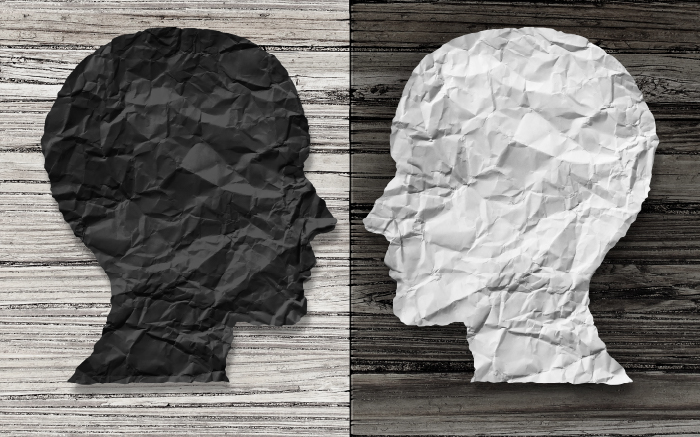Bipolar disorder is a complex mental health condition characterized by extreme mood swings that include manic or hypomanic episodes and depressive episodes. While bipolar disorder can manifest at any age, there are distinct age-related patterns in its onset and presentation. In this article, we’ll delve into the different age groups affected by bipolar disorder, explore the unique challenges they may face, and discuss strategies for early intervention and management.
Understanding Bipolar Disorder
Bipolar disorder is a chronic illness that affects approximately 2.8% of adults in the United States. It can cause significant impairment in social, occupational, and personal functioning if left untreated. The disorder is characterized by alternating episodes of mania or hypomania, during which individuals experience elevated mood, energy, and impulsivity, and depressive episodes, marked by feelings of sadness, hopelessness, and low energy.
Bipolar Disorder Onset in Different Age Groups
- Childhood and Adolescence:
- While bipolar disorder is less common in children and adolescents compared to adults, it can still occur. Early-onset bipolar disorder is often characterized by severe mood swings, irritability, and behavioral problems.
- Diagnosis in children and adolescents can be challenging due to overlapping symptoms with other mental health conditions, such as attention-deficit/hyperactivity disorder (ADHD) or oppositional defiant disorder (ODD). It’s essential for parents and caregivers to seek evaluation and treatment from a qualified mental health professional if they suspect bipolar disorder in a child or adolescent.
- Young Adulthood:
- The late teens and early twenties are a common period for the onset of bipolar disorder. Many individuals experience their first manic or hypomanic episode during this time, often triggered by stress, substance use, or major life changes such as starting college or entering the workforce.
- Diagnosis and intervention during young adulthood are crucial for preventing long-term complications and improving outcomes. However, young adults may face barriers to accessing mental health care, such as lack of awareness, stigma, or limited resources.
- Middle Adulthood:
- Bipolar disorder can also manifest for the first time in middle adulthood, typically between the ages of 30 and 40. While less common than onset in younger age groups, late-onset bipolar disorder may present unique challenges due to the individual’s established responsibilities and roles in family, work, and community.
- Middle-aged adults may initially seek treatment for depressive symptoms, leading to a delay in diagnosing bipolar disorder. It’s important for healthcare providers to conduct a thorough evaluation and consider the possibility of bipolar disorder, especially in individuals with a family history or previous episodes of mood instability.
- Older Adults:
- Bipolar disorder can persist into older adulthood, and new-onset cases can occur in individuals over the age of 50. Late-onset bipolar disorder may be associated with medical comorbidities, cognitive decline, or medication side effects, making diagnosis and management more challenging.
- Older adults with bipolar disorder may also face unique social and economic stressors, such as retirement, the loss of loved ones, or health problems. It’s essential for healthcare providers to consider these factors when developing a treatment plan.
Early Intervention and Management Strategies
Regardless of age, early intervention is key to managing bipolar disorder effectively and preventing complications. Some strategies for early intervention and management include the following:
- Education and Awareness:
- Educate individuals and their families about the signs and symptoms of bipolar disorder, as well as the importance of seeking help early.
- Increase awareness of available resources and treatment options, including therapy, medication, and support groups.
- Regular Screening and Assessment:
- Healthcare providers should conduct regular screenings for bipolar disorder, especially in individuals with a family history or other risk factors.
- Use validated assessment tools to evaluate symptoms and monitor mood changes over time.
- Treatment Planning:
- Develop individualized treatment plans based on the individual’s age, symptom severity, comorbidities, and personal preferences.
- Consider a combination of medication, such as mood stabilizers or antipsychotics, and psychotherapy, including cognitive-behavioral therapy (CBT) or interpersonal and social rhythm therapy (IPSRT).
- Supportive Services:
- Provide access to supportive services, such as case management, vocational rehabilitation, and housing assistance, to address the individual’s holistic needs.
- Involve family members and caregivers in the treatment process, offering education and support to enhance the individual’s social support network.
Bipolar disorder onset can occur at any age, with distinct patterns and challenges associated with each life stage. By understanding these age-related patterns and implementing early intervention and management strategies, individuals with bipolar disorder can receive timely and effective treatment, improving their overall quality of life and functioning. It’s essential for healthcare providers, families, and communities to work together to raise awareness, reduce stigma, and ensure access to comprehensive mental health care for individuals of all ages affected by bipolar disorder.






